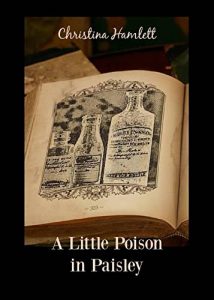HAPPY IS AS HAPPY DOES: The Slow Pivot From HEAs to HFNs
HAPPY IS AS HAPPY DOES:
The Slow Pivot From HEAs to HFNs
By Christina Hamlett
 Romance novels have long been a squillion dollar business for the American publishing industry. In fact, their sales account for over a third of mass market trade paperbacks.
Romance novels have long been a squillion dollar business for the American publishing industry. In fact, their sales account for over a third of mass market trade paperbacks.
Boy Meets Girl. Boy Loses Girl. Boy Gets Girl Back. It’s a simple enough formula which, until recently, removed any ambiguity about what editors wanted and expected from new submissions. Central to this was the strict requirement that every plot successfully delivered a Happily Ever After (HEA). Romance, after all, was not only escapist fare for its readership but was also meant to reinforce society’s message that for every pot (female), there was a lid (male). Heaven forbid that single women should be encouraged through their leisure reading materials to go swanning about lidless.
There was also an unwritten rule that the heroines of romance novels were not allowed to be divorced, a status suggesting they had previously exercised poor judgment in mate selection. They could, however, be widowed but only if one’s spouse died less than two years into the marriage and preferably in the service of one’s country.
The rise of women’s liberation in the 1960s laid the groundwork for 21st century thinking that females were empowered personally and professionally to want more for themselves than courtship, marriage and motherhood. This, in turn, has led to progressive wish-lists on the part of publishers that as long as one’s character arcs resonate plausibly and authentically, there is nothing wrong with a Happy For Now (HFN) resolution.
With the exception of the social mores inherent in historical romance, the restrictions have also been lifted insofar as virginity, premarital sex and dating more than one man at a time. In other words, publishers have made the shift from romanticized relationships to storylines reflecting the workaday realities of dipping one’s toes in the dating pool and deciding it’s much too shallow for an immediate commitment.
Fairy tales may have been the foundation for HEAs but popular movies and plays have given us no shortage of HFNs. Consider, for instance:
In Love Story, Jenny dies.
In Titanic, Jack dies.
In Romeo and Juliet, Romeo and Juliet both die.
In Cyrano de Bergerac, Cyrano dies.
In Casablanca, Ilsa leaves Rick.
In Shakespeare in Love, Will loses the love of his life.
In My Best Friend’s Wedding, the best friend marries someone else.
In Cast Away, the FedEx guy doesn’t marry his beloved.
In Witness, John and Rachel return to their respective worlds.
In Hidalgo, Frank Hopkins leaves Jazira to return to the U.S.
Do any of these endings make us feel sad? Probably. Are they each the right endings for the stories which unfolded? Yes, for even though they may fail the HEA finale, they have nonetheless touched a powerful chord of emotion and made us feel something. Truth be told, we likely will remember those endings which leave us with a keen sense of yearning or heightened introspection far longer than those which wrap up nicely like a holiday present and send all the characters home with smiles of contentment.
It was Oscar Wilde who said, “There are two great tragedies in life. The first is not getting what you want. The second is getting it. When you get the thing you think you want, you realize that it can’t ultimately satisfy you.” It’s a quote that aptly applies to the romance novel conundrum; specifically, the expectation your characters will get together by the final chapter isn’t synonymous with all of their problems magically going away for the foreseeable future. There are relatives to contend with, children to raise, mortgages to be paid, careers to be pursued. Have they ever actually interacted outside the context of the conflict which brought them together in the first place?
In fiction—as in real life—whatever was the initial attraction has to be sustained in order for the relationship to not only survive but to grow. If, for instance, the attraction to the hero was predicated on the heroine being “rescued”—be it from a cruel stepmother, an evil suitor, a toxic work environment, the family farm under foreclosure—what is there left for these two star-crossed lovers to do after the threat has been successfully removed? The HEA formula may deliver what the readers expect but a ride into the sunset on a white charger isn’t always a plausible closure.
In contrast, the HFN acknowledges that both parties still have some growing up to do. Maybe they will get together at some point and segue to HEA but only after they have explored other options, developed outside interests, grown professionally in their chosen careers, and maybe even seen a bit of the world before settling down. It doesn’t diminish the romance to put it on hold, nor will it cause readers to get impatient with your characters or think they are idiots. If anything, it will actually fuel their enthusiasm for you to write a sequel or, better yet, a “will they/won’t they” series.
Speaking of series, how many television shows can you name in which you really wanted the chemistry between the two leads to ignite and send them to the altar? (Scarecrow and Mrs. King, Moonlighting, Beauty and the Beast, The X Files, I Dream of Jeannie, Remington Steele, The Nanny.) Once they became a couple, what compelling reason was there to continue watching?
When it comes to your own romance stories and whether they embrace HEAs or HFNs, there are really only two rules for endings. The first is to give readers what they want but perhaps not in the way they were anticipating. The second is to give them something completely unpredictable but have it logically supported by all of the actions and reactions leading up to it.
__________
Former actress and theatre director Christina Hamlett is an award-winning author of 48 books, 268 stage plays and squillions of articles. Her new UK cozy mystery series is available on Amazon and Barnes and Noble. The latest addition to that lineup is A Little Poison in Paisley. Learn more about her work at www.authorhamlett.com.
A LITTLE POISON IN PAISLEY
 What could be more romantic than exchanging marriage vows in Scotland on a snowy morning just before Christmas? For Rochelle Reid, the obvious answer would be celebrating her own wedding day with Jon. Instead, the two of them find themselves invited to Paisley to watch his childhood crush marrying into a moneyed family. Yet all is not quite as perfect as it seems at Granndach Manor. Before the first course is half-finished at the elegant dinner the night before, a member of the bridal party is not only dead but Jon is also the first one to discover the body. Whatever wistful hope Rocky may have had to catch the bouquet is, alas, supplanted by the quest to catch a killer instead.
What could be more romantic than exchanging marriage vows in Scotland on a snowy morning just before Christmas? For Rochelle Reid, the obvious answer would be celebrating her own wedding day with Jon. Instead, the two of them find themselves invited to Paisley to watch his childhood crush marrying into a moneyed family. Yet all is not quite as perfect as it seems at Granndach Manor. Before the first course is half-finished at the elegant dinner the night before, a member of the bridal party is not only dead but Jon is also the first one to discover the body. Whatever wistful hope Rocky may have had to catch the bouquet is, alas, supplanted by the quest to catch a killer instead.
BUY HERE
Category: On Writing























